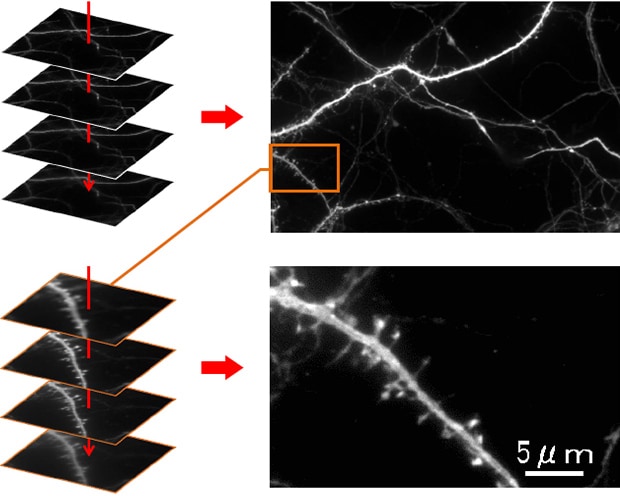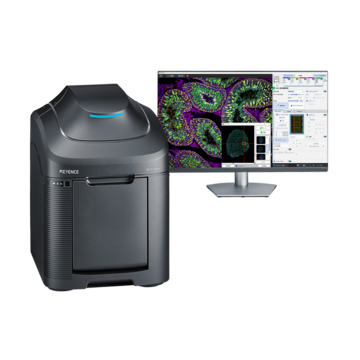Fluorescence Microscopes
Advanced observation delivers high-resolution images
A mouse cerebral cortex (DIV21) is immunostained with GFP antibody to observe it. This process makes it possible to observe the shape of the spine.

Fully focused in the thickness direction (Z-stack)
We’re here to provide you with more details.
Reach out today!

Conventional problems
With conventional microscopes, it is not possible to view images clearly due to noise after magnifying the details.
Also, thick samples like spines generate out-of-focus images, making it difficult to observe them clearly.
Using the All-in-One Fluorescence Microscope BZ-X
- The cooled monochrome camera enables low-noise observation with high sensitivity.
- Thanks to the camera’s high resolution, the clarity of the original image is not lost even after partial magnification or clipping, enabling you to observe even microscopic structures clearly.



